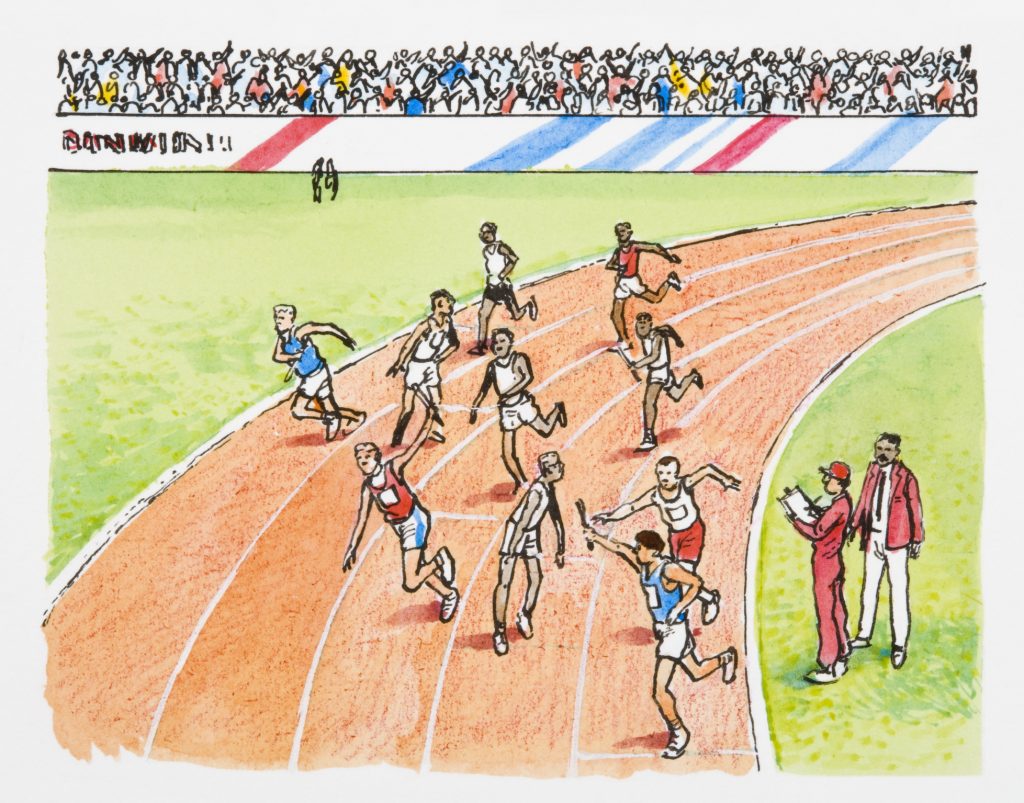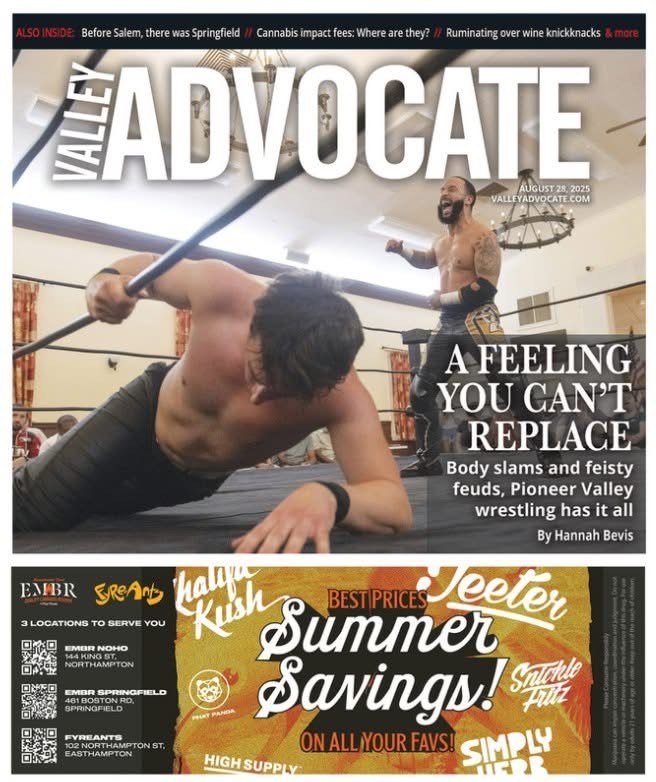Marathon runner and tri-athlete Chris Trotta started running because a guy at work wouldn’t shut up about doing the New York City Marathon.
“He just kept talking about it and talking about it,” says Trotta a Longmeadow father of three. “Finally, he said, ‘I bet you couldn’t run a 10K’ — and I’m the wrong guy to say that to.”
So, Trotta, who was already exercising regularly, ran in the St. Patrick’s Road Race in Holyoke — and hated it.
“I swore off running then.”
But then his co-worker challenged him to run in the New York City Marathon. And again, Trotta couldn’t resist the bet. During his training for the marathon, Trotta ran in a bunch of 5Ks, not really loving the sport much, but determined to best his friend. However, his motivation changed when he ran in the Holyoke Road Race for the second time alongside Dick Hoyt and his son Rick. Hoyt famously runs marathons, triathlons, and Iron Man competitions pushing Rick, who is paralyzed and in a wheelchair.
“To see that kind of dedication from a father for his son, and here I am complaining about pushing my daughter in a jogging stroller for a 5K. I had zero right to complain,” Trotta says. “From then on, I got involved in running more and I got my kids in my activities, too. … I try to impart on them that not everyone is going to finish first, but everyone who finishes wins.”
Trotta now shares his love of the sport with people in the Pioneer Valley and as New England has just now entered 5K-season, the Advocate checked in with Trotta and the people at 50/50FitnessNutrition in Hadley for some advice on how to get running if you never have, or if it’s been a while.
What are some rookie running mistakes?
Chris Trotta: You can’t expect to go out and run a mile if you’ve lived a sedentary life style. If you’re active, you can’t expect to go out and run three miles. If you go out on your first day to train and can’t run more than two or three telephone poles without getting winded, don’t be disappointed. … Running for 30 minutes straight is stressful on the body, especially if you’re not accustomed to it. Pace yourself and start small. After you get a mile, add 10 to 15 percent per week as far as your overall distance.
What’s a good plan for getting ready to run a 5K?
50/50FitnessNutrition created a “couch to 5K” program that got people ready to run in the Daffodil Fun Run, Supporting Big Brothers Big Sisters of Hampshire County on April 24. The plan is a mix of running, walking, and resting. It’s a five week program, that starts slow. Real slow. The first day of the plan is a rest day. On the second day, you alternate running and walking for a minute each for 20 minutes. The third day is rest. Day four is alternating between running for two minutes and walking for four over the course of a half hour. Next up are two days of rest. On the seventh day, you alternate between running for two minutes and walking for four over the course of a half hour again. The complete plan is online at 5050FitnessNutrition.com.
Isn’t walking during a race for wimps?
Chris: It’s not cheating, it’s not failing if you take a walk break. I’ve had to do it and I’m even more proud of some of those races because I listened to my body, I was humble enough to listen, but keep going. … People I know personally have done full marathons doing the run-walk method and they finish in fantastic times where they might not have finished at all if it weren’t for those walk breaks to re-energize. One of the fastest men in the world, Bill Rodgers, won four New York and Boston marathons and in a Boston one he won, he stopped to tie his shoes.
Where are the best places to go running?
Chris: Some of the best terrain to start out on is a track at a local high school or college — a lot of them will allow residents to use the tracks — because they’re flat, clean, and smooth and they’re kind of forgiving on your feet. … You don’t want to start out on a trail in the woods, but something like a bike path, like the one in Northampton when you come off Route 9; it’s great because it’s relatively flat and it’s nice and wide it’s very easy to take those walk-run breaks and it’s so much safer than running on the street. If you’re going to run on the streets, you need to run into traffic so you can see the on-coming vehicles. Whenever I see someone running with traffic with headphones on in a dark shirt, I want to pull over and introduce myself and talk to them about how important it is to see if a car is coming.
Parting shot?
Chris: If you start, you do your best, and you finish — even if you come in dead last, it’s not a big deal — there are no losers in a race, everyone wins.
Contact Kristin Palpini at editor@valleyadvocate.com.



